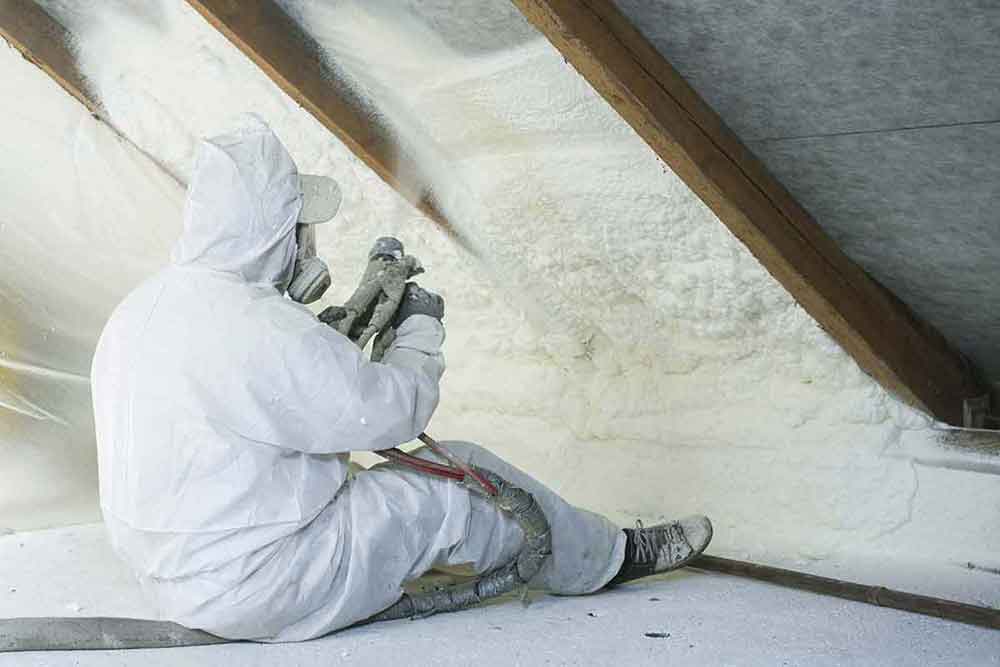
15 Feb Checking Insulation in Old Homes
There are a lot of reasons to live in an old home. They’re often in beautiful neighborhoods, full of character and life. Compared to new builds, they’re often more affordable. And the homes themselves can offer a lot of quality in terms of workmanship, design, and aesthetics.
Of course, buying an old home isn’t all upside – you probably know all about the electrical problems old homes tend to have, for example. Another common problem in old homes is that they aren’t particularly well-insulated.
Worse yet, they might be poorly insulated and insulated with asbestos, which today we all know as a notorious carcinogen. Obviously it won’t do to put yourself at risk of mesothelioma when you’re checking your home’s insulation – what’s a homeowner to do?
Check your insulation – carefully
There are ways of checking your home’s insulation without disturbing any of the insulating materials.
The most indirect way of going about this is through the use of energy auditing tools. You can, for example, buy a thermal leak detector for under $50, and use that detector to see if there are any weak spots in the insulation of your wall or attic.
If your home is old and the insulation has never been redone, you’ll definitely find weak points.
Thermal leak detectors allow you to pinpoint exactly where leaks are occurring, but they don’t tell you very much about the insulation being used. It’s a good idea to insulate these weak points, because a building envelope’s thermal resistance decreases drastically if there are any points where a lot of thermal transfer is occurring.
Checking the walls
You can look to see what kind of insulation is being used in your walls by removing an outlet cover and looking inside using a flashlight – we recommend turning off your power before doing this to stay safe. If the insulation is batt or blanket, it’s almost certainly not asbestos (but you should still wear a particle mask before touching it). If it’s loose fill insulation, it may be asbestos, especially if it’s shaped like grayish or silverish pebbles.
Checking the attic
Checking your attic can be a bit tricky – while many old homes had attics you could walk into, some are little more than crawl spaces. Be sure to wear protective gear – a hard hat, safety goggles, and a particulate mask. You may also need a flashlight.
The rules for the wall apply to the attic – gray, pea-sized, pebble looking insulation may very well contain asbestos (it’s called vermiculite insulation). Don’t touch it. Batt or blanket insulation is probably safe.
Other places you need to insulate
Checking insulation in your basement is relatively simple – just go down there and use your thermal leak detector, and look at how well-insulated the walls are.
You’ll also want to make sure to weatherstrip the doors and windows if they’re not already weatherstripped. Moreover, you’ll want to check that they were properly installed; there are a lot of problems caused by poor window installation, not the least of which is poor thermal resistance. The same goes for doors – old doors and windows, no matter how well-installed they were, tend to insulate poorly compared to their modern counterparts.
Hiring an energy auditor
Instead of doing this work yourself, you can always hire an energy auditor to check your insulation levels for you. They may be able to more readily determine whether or not more insulation is worth your while.
What to do if you find asbestos
Should you find something that looks like asbestos – don’t touch it. Hire an asbestos professional to test the insulation and verify whether or not it’s asbestos.
Generally, if a home has asbestos, the most cost-effective thing to do is simply leave it. Asbestos doesn’t pose health risks if it’s undisturbed – of course, how long it will go undisturbed is something of a matter of chance.
You might decide to get rid of the asbestos. This is often a decision made by people who are looking to renovate, either because they’re getting selective demolition services or because they’re hiring an insulation contractor. In either case, you should hire an asbestos removal expert. Choose a different contractor than the contractor who tested the insulation for asbestos – this eliminates a potential conflict of interest.
We sincerely hope this piece has given you the tools you need to check the insulation in your old home. New insulation is often very worthwhile – the energy savings alone can more than make up for the initial cost. Of course, that varies from case to case – that’s why professional energy audits are so often worth the money.


Sorry, the comment form is closed at this time.